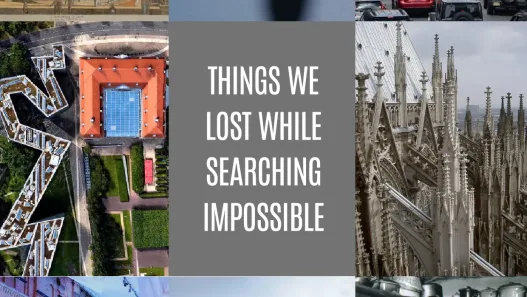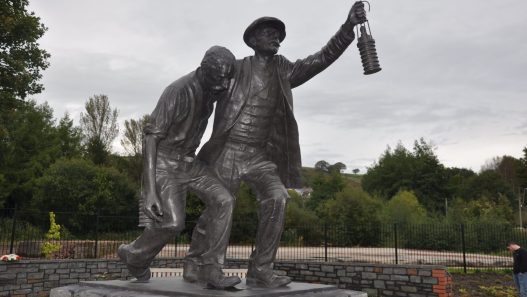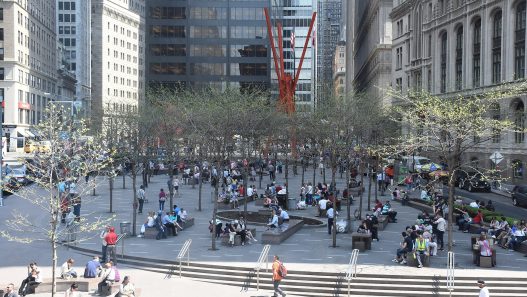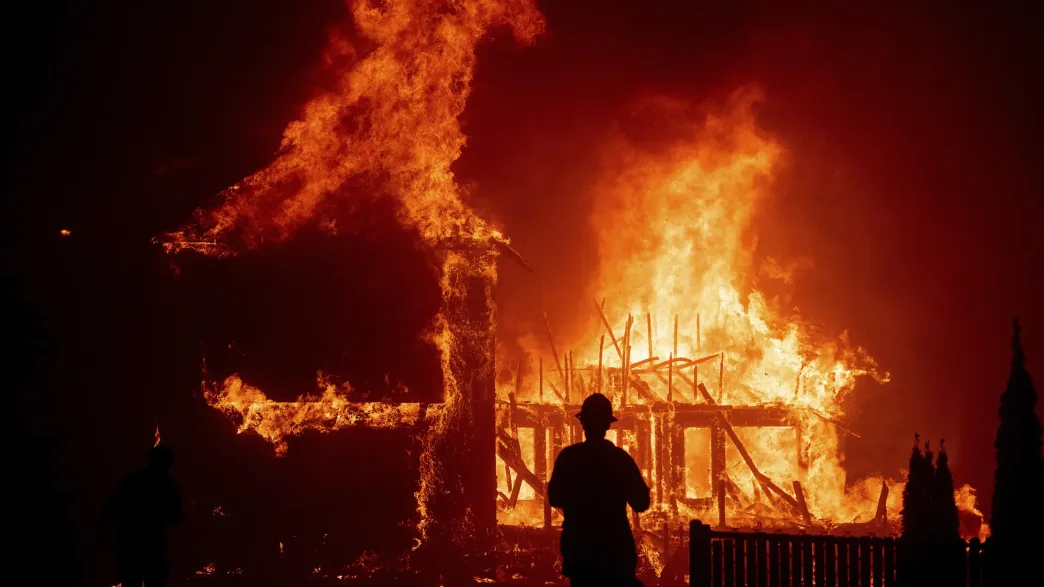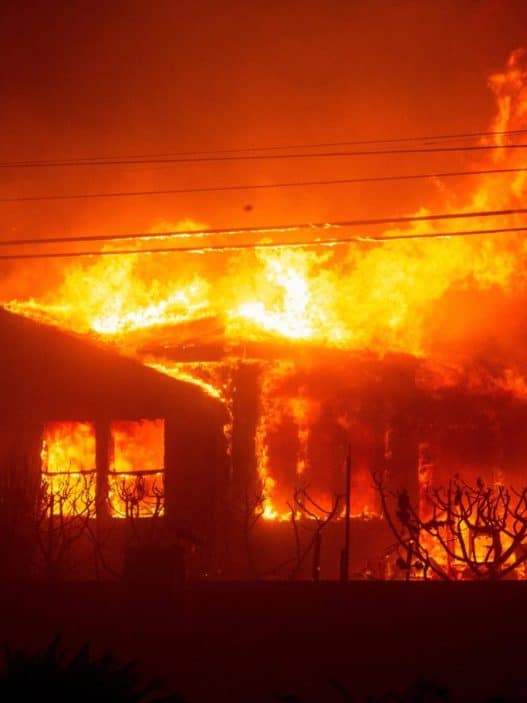The Camp Fire was one of the most devastating natural disasters in California history, affecting not only the landscape but also the lives of thousands of residents. This devastating wildfire, which broke out in November 2018, devastated the town of Paradise and surrounding areas, leaving a trail of destruction in its wake. When we examine the aftermath of this disaster, it becomes clear that the Camp Fire has served as a catalyst for rethinking community design and resilience strategies in the face of increasingly frequent wildfires.
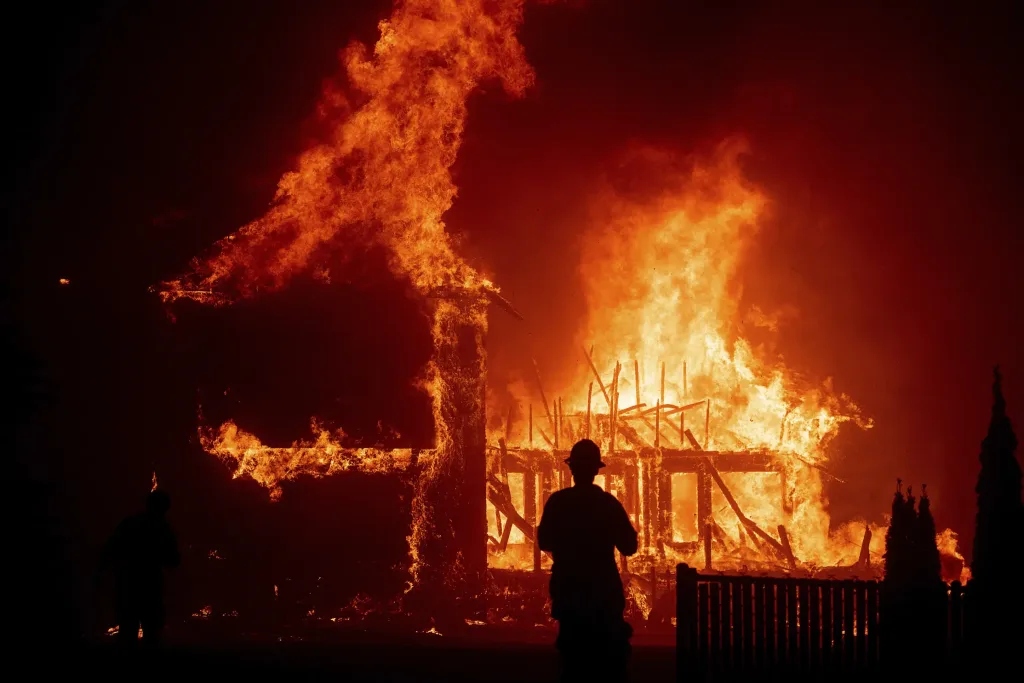
Camp Fire Overview
The Camp Fire began on November 8, 2018, and quickly grew into a massive inferno due to dry conditions and high winds. In a matter of hours, it burned more than 150,000 acres and destroyed more than 18,000 structures, including nearly 14,000 homes in the town of Paradise. The fire claimed the lives of many people and is the deadliest wildfire in California history. The scale and speed of the Camp Fire exposed weaknesses in community planning and emergency response, and raised urgent questions about how to protect communities from such overwhelming forces of nature.
Impact on Society
The aftermath of the Camp Fire was a heartbreaking testament to the fragility of life and infrastructure in fire-prone areas. Entire neighborhoods were reduced to ashes, and the emotional impact on survivors was immeasurable. Families lost their homes, businesses were destroyed, and many residents were left to grapple with the loss of friends and loved ones. The local economy, which relied heavily on tourism and agriculture, faced significant disruptions. However, the spirit of the community shone through as residents came together to support one another, demonstrating the resilience inherent in human connections.
In practical terms, the fire led to a reevaluation of building codes, land-use policies, and emergency response strategies. The magnitude of the destruction led to discussions about how to create safer environments not only for rebuilding but also for future growth.
Historical Context of California Wildfires
To understand the impacts of the Camp Fire, it’s important to consider California’s long history of wildfires. The state’s diverse ecosystems, characterized by dry summers and wet winters, have always been vulnerable to fire. Native American practices included controlled burns to manage the land and promote healthy ecosystems, but modern practices have often neglected these methods.
In recent years, climate change has exacerbated wildfire conditions, leading to longer fire seasons and more intense fires. The Camp Fire, while catastrophic, was not an isolated incident but part of a growing trend of more frequent and severe wildfires across the state. This historical context highlights the urgent need for innovative strategies that prioritize fire resilience in community design.
The Importance of Community Resilience
Community resilience refers to a community’s ability to prepare for, respond to, and recover from adverse events such as wildfires. The Camp Fire highlights the importance of developing resilient communities that can withstand such disasters. Resilience includes not only physical infrastructure, such as fire-resistant buildings and defensible space around homes, but also social structures, such as strong community networks and effective communication systems.
Investing in resilience means creating environments that anticipate and mitigate potential disasters. For example, communities can implement green buffers, such as strategically placed vegetation that reduces fire risk while increasing biodiversity. In addition, involving residents in planning processes ensures that local knowledge and needs are integrated into resilience strategies.
Blog Post Goals
This blog post aims to explore the lessons learned from the Camp Fire and the broader implications for community design and wildfire resilience. We will examine innovative approaches that can help communities not only recover, but thrive in the face of future challenges. By analyzing the impact of the Camp Fire and the historical context of wildfires in California, we hope to inspire a forward-thinking dialogue about how to build safer, more resilient communities. Through this discussion, we aim to highlight the importance of collaboration among residents, planners, and policymakers to build a sustainable future.
#TheCampFire:RethinkingCommunityDesign andWildfireResilience
The Camp Fire, one of the deadliest and most destructive wildfires in California history, left a profound impact not only on the landscape but also on the communities affected. This disaster has led to a critical examination of how we design and build our environments, especially in areas prone to wildfires. This thinking has led to a reimagining of architectural practices, emphasizing the need for resilience in the face of natural disasters. By exploring the architectural lessons learned from the Camp Fire, we can better prepare for future challenges and create safer, more sustainable communities.
Architectural Lessons from the Camp Fire
The Camp Fire highlighted significant vulnerabilities in current community designs, highlighting the urgent need for innovative architectural solutions. In the wake of the fire, architects, planners, and communities began to understand that resilience requires more than just building codes; it requires a holistic design approach that integrates safety, sustainability, and community well-being. This lesson emphasizes the importance of learning from past mistakes and adapting our designs to better withstand the impacts of climate change and natural disasters.
Design Strategies for Fire Resistance
When rethinking community design, one of the primary strategies is to add fire-resistant features to new buildings. This includes creating defensible space around structures, which includes landscaping techniques that minimize flammable vegetation and using fire-resistant materials for roofs and siding. It’s also crucial to design buildings with firebreaks, which are areas devoid of vegetation that can slow or stop the spread of fire. These strategies not only protect individual homes, they also increase the safety of entire neighborhoods, promoting a sense of security among residents.
Moreover, architects now take into account the layout of communities. Clustering homes to maximize natural firebreaks, such as roads or non-flammable zones, can significantly reduce fire risk. Integrating community gathering spaces, such as parks and recreation areas, also plays a role in resilience, as these areas can serve as safe havens in emergencies.
Materials and Construction Techniques
The materials used in construction directly affect a building’s ability to withstand fire. After the Camp Fire, there was a greater focus on non-combustible materials such as brick, plaster and metal. These materials not only resist ignition but also help control fires. Innovative technologies such as fire-resistant glass for windows are becoming increasingly common and provide an additional layer of protection.
Additionally, advances in construction techniques have opened up new avenues for fire resistance. For example, it is essential to create homes with reinforced structures that can withstand high temperatures and high winds. Using prefabricated materials can also speed up the construction process, allowing for faster rebuilding in fire-affected areas. These construction innovations not only increase safety, but also promote sustainability, as they often include energy-efficient designs.
Landscape Architecture and Fire Stops
Landscape architecture plays a critical role in fire resistance. Thoughtful landscape design can create effective firebreaks that protect properties and neighborhoods. This includes strategically placing fire-resistant plants and using hardscape elements such as stone paths and gravel to create barriers to the spread of fire.
Additionally, communities can use controlled burning and other ecological practices to manage vegetation and reduce fuel loads on surrounding areas. These proactive measures not only increase fire safety, but also promote biodiversity and restore natural ecosystems. By aligning landscape architecture with fire management strategies, communities can create environments that are both beautiful and resilient.
Community Planning and Zoning Changes
The Camp Fire has led to a reevaluation of community planning and zoning laws. Many areas previously considered safe for development have been found to be at high risk. As a result, planners are advocating stricter zoning regulations that discourage development in high-risk areas and encourage the development of fire-resistant communities.
Community participation is also vital to this process. Including residents in discussions about land use and development ensures that their voices are heard and their needs are met. By encouraging a collaborative approach, communities can create flexible designs that reflect their unique characteristics and challenges, ultimately leading to a stronger sense of belonging and collective responsibility.
Case Studies on Resilient Structures
Examining case studies of structures that have successfully withstood wildfires provides valuable insight into effective design practices. For example, some homes built after the Camp Fire used advanced fire-resistant technologies and materials, demonstrating the importance of innovation in protecting against future disasters. These homes often have features such as metal roofs, tempered glass windows, and landscaping that minimize fire risk.
Additionally, the successful community designs that emerged from the ashes of the Camp Fire demonstrate how collaborative efforts can lead to resilient neighborhoods. By analyzing these case studies, architects and planners can draw inspiration and guidelines for future projects, helping communities better navigate the challenges of wildfires.
The Camp Fire is a catalyst for change in architectural practice, challenging us to rethink how we design our communities. By learning from the past and embracing innovative solutions, we can create a future where resilience is at the forefront of community design and ultimately protects lives, property, and the environment.
#TheCampFire:RethinkingCommunityDesign andWildfireResilience
The devastating Camp Fire that devastated Paradise, California, in 2018 is a stark reminder of the vulnerabilities many communities face in the wake of natural disasters. As we explore how communities can become stronger and more resilient, it is crucial to examine the role of community engagement and the collaborative efforts that emerged from this tragedy. This research not only highlights the importance of local participation, but also sheds light on innovative approaches to community design that prioritize safety, sustainability, and recovery.
Community Engagement and Improvement Efforts
In the aftermath of the Camp Fire, the importance of community participation became increasingly clear. Recovery efforts were not solely dependent on government action; they required the active participation of residents, local organizations, and a variety of stakeholders. The rebuilding process was as much about restoring homes as it was about reestablishing a sense of belonging and shared responsibility among community members.
One of the most important aspects of this involvement was the recognition that the community’s voice must guide recovery efforts. With an intimate understanding of the nuances of their environment and the needs of their neighbors, local residents made significant contributions to the planning and rebuilding process. Their contributions helped ensure that recovery efforts addressed not only the physical infrastructure but also the emotional and social fabric of the community.
The Role of Local Governments
Local governments have played a crucial role in facilitating recovery and resilience efforts. In the wake of the disaster, authorities recognized the dire need for a coordinated response. They focused on creating a framework that would enable rapid recovery while also incorporating long-term strategies for wildfire resilience.
One key initiative was the creation of a comprehensive recovery plan that included zoning regulations, building code revisions, and land-use strategies aimed at minimizing future wildfire risks. The plan emphasized the importance of creating defensible spaces around homes and infrastructure that could significantly reduce the threat posed by wildfires. Local governments also worked diligently to secure funding for rebuilding, ensuring resources were allocated to both immediate needs and long-term resilience.
Participation of Nonprofits and Community Groups
Nonprofits and community groups have emerged as vital allies in the recovery process. Many organizations have quickly mobilized to provide emergency aid, offering shelter, food, and emotional support to those affected by the fire. Their grassroots efforts have fostered a sense of solidarity and hope among residents.
These groups not only focused on emergency relief, but also played a key role in advocating for sustainable rebuilding practices. They encouraged community members to envision a future that embraced not only safety but also environmental stewardship. By promoting sustainable building materials and practices, these organizations helped shape a community that was not only resilient to wildfires but also mindful of its ecological footprint.
Public Workshops and Design Meetings
Public workshops and design meetings became vital platforms for community dialogue. These interactive events allowed residents to share their visions for the future, discuss their concerns, and brainstorm solutions together. By encouraging open communication, community members felt empowered to take an active role in the rebuilding process.
During these workshops, participants explored a variety of design concepts that could increase community resilience. Ideas ranged from creating fire boundaries—areas cleared of flammable vegetation—to developing community gardens that not only provide food security but also serve as shared spaces for gathering and healing. These collaborative sessions emphasized the importance of community input in creating designs that reflect the unique needs and desires of area residents.
Feedback and Adaptation Processes
A key component of the recovery process was the establishment of feedback and adaptation mechanisms. As the community began to implement new designs and strategies, flexibility became clear. Regular check-ins and feedback loops allowed residents to voice their experiences and suggest necessary adjustments.
This iterative process ensured that improvements continued to respond to the changing needs of the community. For example, if a particular design element proved ineffective in reducing fire risks, residents could advocate for changes based on their lived experiences. This adaptability not only increased community resilience, but also fostered a culture of collaboration and continuous improvement.
Success Stories of Community Resilience
Amid the challenges, many success stories have emerged from the ashes of the Camp Fire. Communities have come together to rebuild not just their homes, but also their identity and purpose. For example, some neighborhoods have set a precedent for future development by adopting innovative designs that include fire-resistant landscaping and materials.
One notable example is the creation of a community center that serves as a hub for resources and support. Not only does this center provide a space for recovery services, it also hosts community events that strengthen connections among residents. Embodying a shared commitment to a safer, more vibrant future, this center is a testament to the power of collaboration and resilience.
Ultimately, the aftermath of the Camp Fire demonstrates the transformative power of community engagement in the face of disaster. By taking a collaborative approach involving local government, nonprofits, and residents, the Paradise community is not only rebuilding, but also reimagining a future that prioritizes resilience and sustainability. The lessons learned from this experience can inspire other communities facing similar challenges and reinforce the idea that collective action can lead to meaningful change, even in the wake of tragedy.
#TheCampFire:RethinkingCommunityDesign andWildfireResilience
The Camp Fire that devastated Paradise, California, served as a wake-up call for communities across the United States and beyond. This catastrophic event highlighted the need for innovative approaches to community design and wildfire resilience. The devastation, along with the loss of lives and homes, has led to urgent discussions about how communities can be better protected from future wildfires. As we examine the regulatory changes following the Camp Fire, we uncover a landscape of new building codes, insurance challenges, policy reforms, and future legislative proposals aimed at fostering safer environments.
Regulatory Changes After the Camp Fire
In the aftermath of the Camp Fire, regulatory changes emerged as a critical response to the urgent need to improve safety and resilience in wildfire-prone areas. These changes not only addressed immediate concerns, but also laid the groundwork for long-term strategies to reduce wildfire-related risks. As communities began to rebuild, they faced a complex web of new regulations aimed at creating safer, more resilient environments.
New Building Codes and Standards
One of the most significant regulatory interventions has been the introduction of new building codes and standards specifically designed to increase resilience to wildfires. These codes require the use of fire-resistant materials in construction, ensuring that homes and buildings can withstand the intense heat and flames of wildfires. For example, roofs made of fireproof materials, fire-resistant decks and tempered glass windows are now standard in many rebuilding plans.
In addition, the regulations emphasize defensible space, that is, an area around a building that is maintained to reduce the risk of fire. Homeowners are encouraged to create buffer zones by clearing flammable vegetation and using fire-resistant landscaping. This proactive approach not only protects individual structures, but also contributes to the overall safety of the community. By implementing these standards, local governments aim to foster a culture of resilience that prioritizes safety and allows communities to thrive in harmony with their natural environment.
Insurance Adjustments and Challenges
The Camp Fire also triggered significant changes in the insurance landscape. As insurers grapple with the financial implications of such widespread devastation, many are reevaluating their policies and coverage options. Homeowners in fire-prone areas are facing skyrocketing premiums, limited coverage, and even policy cancellations. This has created a daunting challenge for many residents looking to rebuild.
Insurers have responded by offering new products tailored to the unique risks associated with wildfire. For example, some companies have launched programs that encourage homeowners to implement smart fire-proofing practices, such as creating defensible space around their properties. However, navigating this new insurance landscape remains challenging for many, as homeowners must balance affordability with adequate coverage. The complexity of these regulations underscores the importance of clear communication between insurers and policyholders, ensuring residents understand their options and responsibilities.
State and Local Policy Reforms
In addition to changes in building codes and insurance practices, state and local governments have initiated comprehensive policy reforms aimed at improving community resilience. These reforms have often focused on improving land-use planning, emergency response protocols, and community engagement strategies. Many jurisdictions have emphasized the importance of integrating fire risk assessments into urban planning processes to ensure that future developments take into account the potential impact of wildfires.
Local governments have also begun to form partnerships with community organizations and residents to promote awareness and preparedness. Education campaigns have aimed to inform the public about wildfire risks and encourage proactive measures, such as participating in community fire drills. These reforms reflect a broader understanding that resilience is not just about infrastructure, but also involves developing a culture of preparedness and collective responsibility within communities.
Environmental Regulations and Fire Management
The Camp Fire also reignited debates about environmental regulations and fire management practices. As wildfires intensified, the need for effective forest management strategies was recognized. Policymakers began advocating controlled burning, thinning of overgrown forests, and restoration of natural fire regimes to reduce fuel loads and minimize the risk of catastrophic fires.
Environmental regulations have also been adapted to ensure land management practices are aligned with wildfire resilience goals. This includes reviewing logging practices, improving habitat management and prioritizing ecosystem health. By taking a holistic approach to land management, communities can not only reduce wildfire risks, but also promote biodiversity and protect the natural landscapes that define them.
Future Legislative Proposals
Looking ahead, lessons from the Camp Fire continue to shape legislative proposals at both the state and federal levels. Policymakers increasingly recognize the need for comprehensive wildfire resilience strategies that encompass not only building code and insurance reforms, but also community planning, environmental management, and public education.
Future proposals could include increased funding for wildfire prevention programs, incentives for homeowners to adopt fire-resistant practices, and the creation of collaborative frameworks for regional fire management. As communities work to recover and rebuild, these legislative efforts aim to create a safer, more resilient future for all residents.
Ultimately, the Camp Fire serves as a poignant reminder of the vulnerabilities that communities face in the face of natural disasters. The regulatory changes that have emerged in the wake of the fire reflect a collective commitment to rethinking community design and increasing wildfire resilience. Through innovative building codes, adaptive insurance practices, comprehensive policy reforms, and forward-thinking legislative proposals, we can create environments that not only withstand the threat of wildfire, but thrive amid nature’s challenges.
#TheCampFire:RethinkingCommunityDesign andWildfireResilience
The Camp Fire in California was one of the deadliest and most destructive wildfires in U.S. history. It not only devastated the town of Paradise, but also forced communities across the country to rethink how they prepare for and respond to wildfires. As climate change intensifies, the need for innovative solutions in wildfire management is vital. This has triggered a wave of technological advances aimed at increasing resilience and protecting communities from future disasters.
Innovative Technologies in Forest Fire Management
As communities work to strengthen their defenses against wildfires, innovative technologies have emerged as a beacon of hope. These advances are providing new ways to predict, manage, and mitigate wildfires and are changing the way we think about fire safety.
Smart Sensors and Early Warning Systems
One of the most promising developments in wildfire management is the use of smart sensors and early warning systems. These technologies are designed to monitor environmental conditions and detect fires before they grow. Smart sensors can provide real-time data that helps predict fire behavior by tracking temperature, humidity, and wind patterns.
For example, systems deployed in California have warned residents of approaching fires, giving them crucial minutes to evacuate. Integrating these sensors with AI improves predictive capabilities, allowing for more accurate estimates of fire spread. This technology can enable communities to act quickly and decisively, potentially saving lives and property.
Fire Resistant Materials and Technologies
In the realm of architecture and urban planning, the development of fire-resistant materials is transforming the way communities are built. These materials, such as fire-resistant siding, roofing, and glass, are designed to withstand high temperatures and slow the spread of flames.
For example, some neighborhoods in fire-prone areas are now built with fireproof materials that significantly reduce the risk of ignition. Innovations such as insulated concrete forms (ICFs) and fire-resistant glass not only increase safety, they also improve energy efficiency. By integrating these technologies into building codes, communities can create safer environments that are better equipped to deal with wildfires.
Remote Sensing and Data Analysis
Remote sensing technologies, including satellite imagery and airborne drones, play a vital role in wildfire management. These tools allow scientists and emergency responders to monitor large areas quickly and effectively.
For example, satellites can capture images of smoke plumes and hot spots, providing real-time assessments of fire conditions. This data is invaluable to decision-makers who can allocate resources more efficiently and plan evacuation routes. Additionally, advanced data analysis techniques can help identify wildfire behavior patterns, informing future prevention strategies and community planning.
Community Apps for Fire Alerts
With the proliferation of smartphones, community apps have become an important tool for wildfire preparedness and response. These apps provide residents with timely alerts about fire threats, evacuation routes, and safety tips.
Local governments and organizations are developing apps that integrate with emergency services to ensure users receive accurate and up-to-date information. These apps engage communities through technology, encouraging a culture of preparedness and resilience. They empower individuals to take proactive measures, such as creating defensible spaces around their homes or participating in local fire drills.
Research and Development in Fire Safety
Ongoing research and development in the field of fire safety is crucial to our understanding of forest fires and the development of prevention techniques. Universities and research institutions are investigating a variety of topics, from the ecological impacts of fire to the effectiveness of various firefighting strategies.
Collaborations between scientists, engineers, and policymakers are leading to innovative solutions that increase wildfire resilience. For example, studies on the effectiveness of controlled burns in reducing fuel loads have influenced land management practices across the country. As research continues to advance, it paves the way for more effective policies and technologies that protect communities from the increasing threat of wildfire.
In summary, the Camp Fire was a catalyst for a significant shift in our approach to wildfire management. With innovative technologies, communities can increase their resilience and better protect themselves from the devastating effects of wildfires. By embracing these advances, we can create safer, more sustainable environments that are prepared for the challenges of the future.
#TheCampFire:RethinkingCommunityDesign andWildfireResilience
Conclusion and Future Recommendations
The Camp Fire was a devastating reminder of the power of nature and the fragility of human settlements. This tragic event not only took lives and destroyed homes, but also prompted a critical reassessment of how we design and build our communities in wildfire-prone areas. As we reflect on the lessons learned, it is important to consider future directions that can help us build more resilient and sustainable communities.
Summarizing Key Takeaways
One of the most important takeaways from the Camp Fire is the urgent need for proactive measures in community design. The fire highlighted the dire consequences of urban sprawl and the lack of defensible space around homes. Building materials and methods proved to be important; homes built with fire-resistant materials fared better in the face of flames. Additionally, the importance of community preparedness and planning emerged as a critical factor in reducing the risks associated with wildfires. Community engagement and education on fire safety can empower residents to take action before disaster strikes.
The Importance of Ongoing Research and Innovation
Looking ahead, the role of ongoing research and innovation in wildfire resilience cannot be overstated. Scientists and architects are investigating advanced materials and techniques that can withstand extreme heat and flames. Innovations in landscape architecture, such as fire-adapted landscaping, are being developed to create buffer zones that can slow or redirect fires. Additionally, integrating technology into community planning, such as early warning systems and real-time data sharing, can improve preparedness and response efforts. Continued investment in research will provide valuable information and tools that communities can adopt to protect themselves from future wildfires.
Call to Action for Communities
Communities must be proactive in addressing wildfire risks. This call to action calls not only on local governments, but also residents, businesses, and nonprofits to work together. Communities should advocate for stricter building codes that prioritize fire safety, support local initiatives that promote defensible space, and participate in regular fire drills and education programs. Collaboration among diverse stakeholders can foster a culture of resilience by ensuring everyone is prepared to respond effectively to wildfire threats.
Vision for Future Society Designs
The vision for future community designs is to create environments that are in harmony with nature while prioritizing safety and sustainability. This means rethinking urban layouts to reduce density in high-risk areas and incorporating green spaces that can act as fire breaks. Sustainable building practices should be the norm, using materials that are both environmentally friendly and fire-resistant. Future designs should also emphasize community spaces that foster social connections, making it easier for residents to collaborate on safety initiatives and share resources in times of crisis.
Final Thoughts on Resilience and Sustainability
Ultimately, the lessons learned from the Camp Fire are challenging us to rethink not just our architectural practices, but our entire approach to community resilience and sustainability. As we embrace innovative designs and foster collaboration, we can create communities that are not only physically resilient to wildfires, but also socially cohesive and environmentally sustainable. The journey ahead will require determination and creativity, but by learning from our past, we can build a safer future for future generations.





